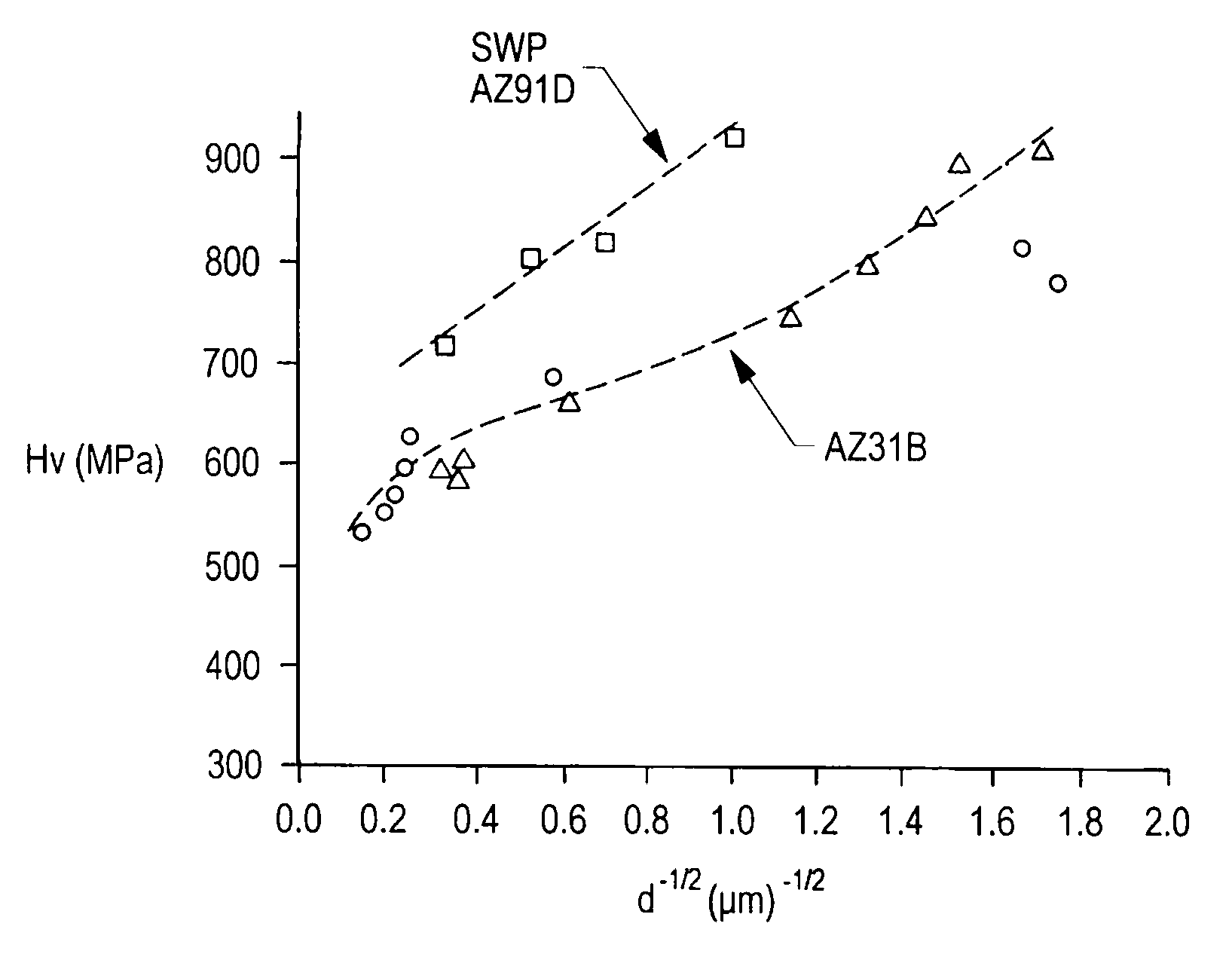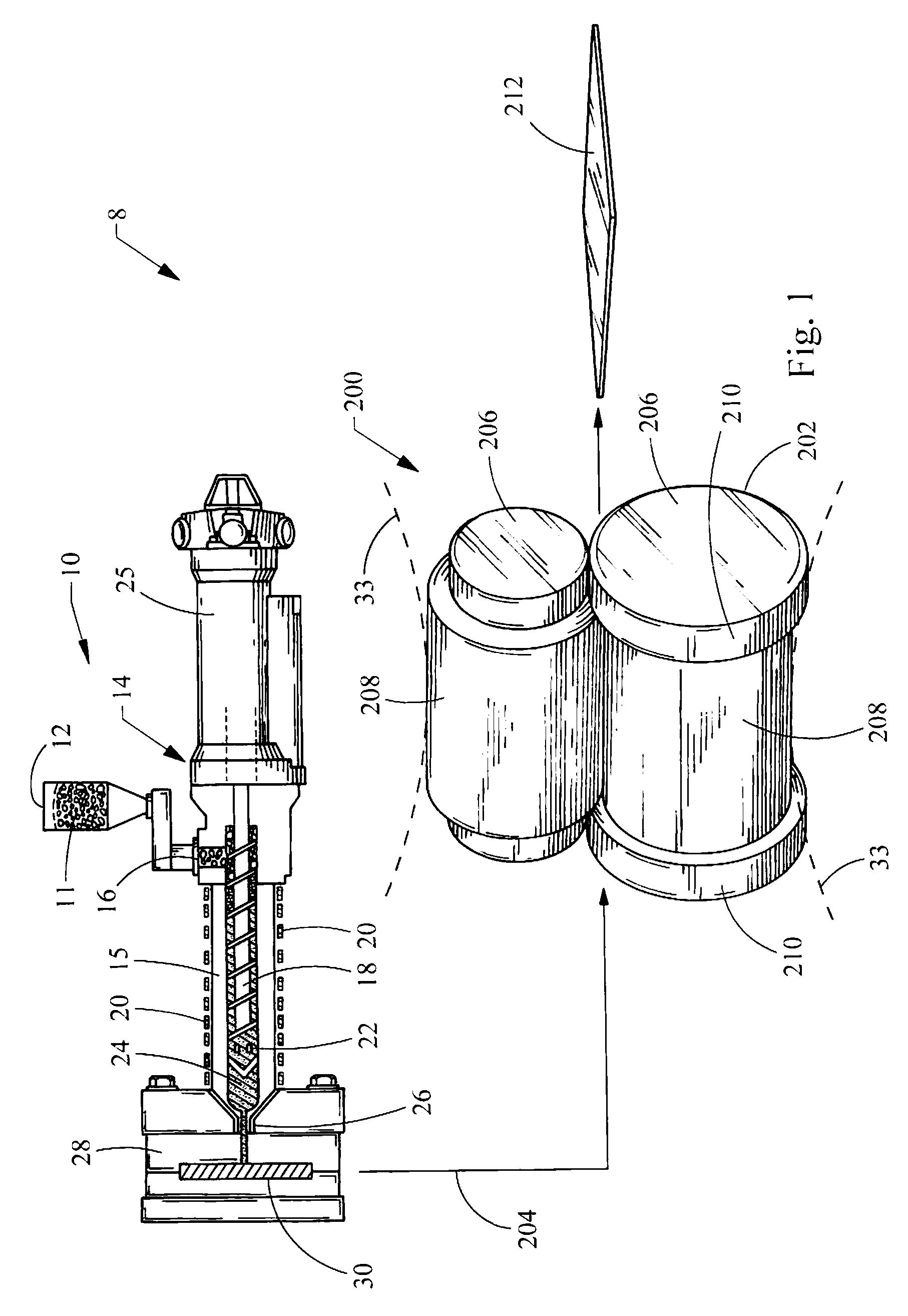While wrought magnesium has the potential for making thinner structures,
anisotropy in mechanical properties limits the applications of
Mg alloys and their wrought products.
A high value of normal
anisotropy in sheet is helpful for
deep drawing, but may not be suitable for other applications, particularly if in-plane strength is also anisotropic.
In fact, this base element has not been a friendly host for extensive alloy strengthening.
Furthermore, it is difficult to attain efficient age hardening by fine precipitates within the grains, as exemplified by the case of inefficient Al additions.
At
room temperature, “basal a” slip {0001} is predominant, while “
prism a” and slip are difficult because of their significantly high critical resolved shear stresses (CRSS), which are reported in regions of
high stress concentration such as grain boundaries and twin interfaces.
A single twinning mode cannot fully accommodate plastic deformation.
When basal slip is inhibited at ambient temperatures, twinning deformation can be localized, which leads to low
ductility in Mg.
Two major drawbacks
restrict the application of wrought Mg alloys.
), although helpful to overcome the restriction of slip, makes oxidation problems more severe.
However, for HCP metals, such as Mg alloys, grain refinement may also cause texture variation, and inadequate strengthening in certain directions.
These processes are costly,
time consuming and have not enjoyed commercial success.
When these processes are used in a repeated manner, the overlap of shear zones within the bulk material from individual steps causes extensive grain
subdivision and formation of
fine grain structure.
Deformation by several deformation passes through equal channels (so called ECAP) has been practiced in the lab on Mg bars, but is not practical for Mg sheets.
To date, Mg alloys have not enjoyed this advantageous
processing in commerce.
First, Mg alloy castings do not have the prerequisite
grain boundary crystal structure and, secondly, wrought Mg sheets have been too coarse grained and / or too textured for superplastic forming.
However, construction and
assembly of such a
microstructure for bulk structural parts, ab-initio from nano-powders, is a very costly and laborious.
Also, there are safety and health concerns for handling such fine particles in the workplace.
The
grain boundary structure in conventionally prepared Mg alloy is not favorable to complex deformation without premature fracture, unless an elevated forming temperature is used.
The pressing and
deep drawing of 3-D shapes is limited by the texture and the inherent non-uniform deformation that results from twinning, such as for example, “earring”, where shapes resembling ears are formed in portions of the grain
microstructure.
Although twinning in some directions of the sheet causes increased elongation during
tensile testing, twinning is an impediment to the formation of complex parts due to the anisotropy it produces in coarse grain Mg alloy, resulting in anomalies in
work hardening and non-uniform deformation.
Further, the modeling of
forming processes and performance in the dies is not reliable with such non-uniformity in structure.
Also, the coarse
surface finish of present coarse grain Mg alloys poses a challenge to their acceptance as automotive sheet parts.
The TRC product is typically too thin to refine the grain size below 7 μm by such hot
processing.
The TRC structure also suffers from centerline
porosity.
Continuous cast Mg alloy may have promise, but currently this technology is not
fully developed and many individual pieces of technologies are required for its full implementation, the scope of which is incompatible with small business operations and may not have the flexibility offered by the process of the present invention.
The many stages involved in breaking down large-grained conventional sheet precursors to produce the sheet form cause current wrought Mg alloys to be expensive, on the order of $5.00 to $10.00 / lb.
 Login to View More
Login to View More 


